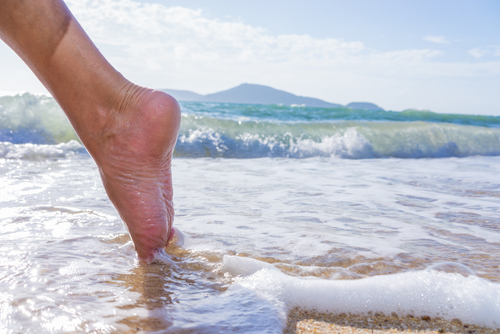
Here at the Shore, it’s not uncommon for a patient to come into the Urgent Care saying they have been bit by “Sea Lice.” “Sea Lice” or more appropriately, Seabather’s Eruption, is a summertime ailment of beach goers. The rash is not related to lice at all but is caused by stings from thimble jellyfish larvae,found along the southeast coast of the US, or along the Jersey coast, stings by larvae of a sea anemome called Edwardsiella lineata. Actual sea lice are parasites that feed on fish, not humans. The jelly fish or sea anemome larvae get trapped under the bathing suit triggering the larvae to sting and inject their toxin. The toxin then triggers the bather to have a hypersensitivity reaction which is the rash. The larvae season is generally from May through August with the highest numbers between June and July.
The typical rash is described as very itchy, erythematous papules commonly found in linear or curved distribution on the skin. The lesions may progress to vesicles or pustules. The rash usually occurs on parts of the body that is covered by the bathing suit, but can also occur on the neck, arms, legs and axilla. The rash can begin within minutes or take up to twenty-four hours after swimming in the ocean. Some people report they had a prickly or stinging sensation while still in the water. The rash can last for a few days to a week, sometimes even two weeks. Although rare, children, especially, can have more systemic symptoms such as fever, chills, headache, nausea, vomiting, diarrhea, muscle and joint pain. Also, a history of a prior eruption puts the patient at a higher risk for a more severe presentation.
Treatment of Seabather’s Eruption is straightforward. If a bather suspects hey have been affected by this larvae it is recommended that the person remove their bathing suit ASAP and then rinse off their body. Fresh water can cause the larvae to sting. The bathing suit should be washed in hot water and dried in the clothes dryer to kill the larvae. For the rash, the patient can use hydrocortisone cream, calamine lotion, colloidal oatmeal, oral antihistamines and NSAIDs. Sometimes an oral corticosteroid is needed for a more severe rash or itching. You may also hear of some home remedies, such as using rubbing alcohol and meat tenderizer, but these are unlikely to help.
